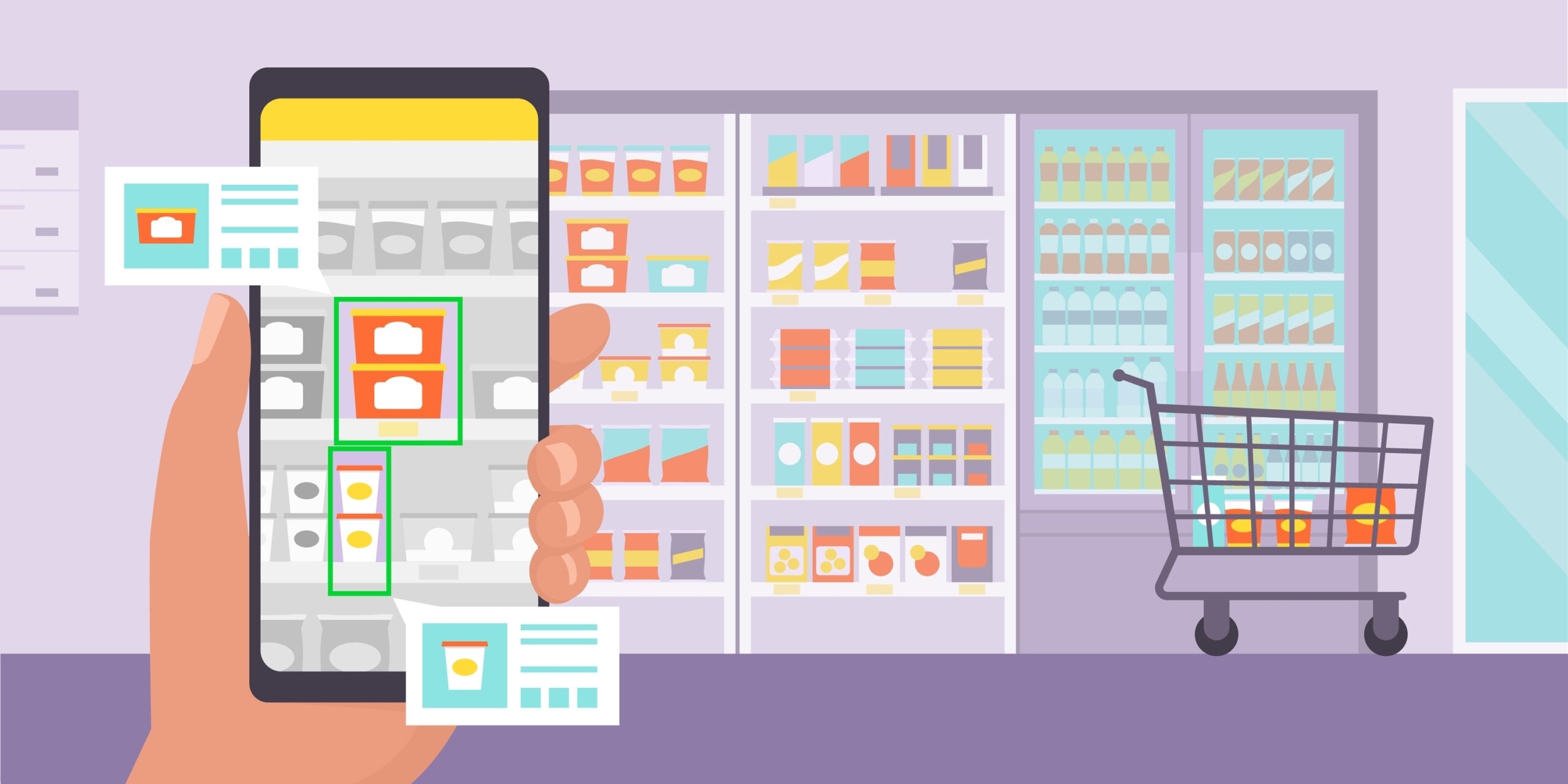When it comes to launching a successful product, especially for consumer packaged goods (CPG), market research is key. And although it is a relatively well-known concept, there are still certain areas of market research that can be unclear, including how to take it from a product’s inception to fruition.
Learning the tools and key strategies for effective market research can change the trajectory of a brand’s success, both in the short and long term. We’re taking a look at the overall themes of successful market research, why it’s necessary for brands, and key strategies to follow — to help businesses build a brand that customers want to be a part of. In addition, we’re addressing how even companies on a budget can benefit from CPG market research.
What is CPG market research?
Consumer packaged goods, or CPG, are products that are purchased frequently by consumers. This can include things like beauty products, clothing, and household products. These products typically have a short life span and are meant to be used or consumed shortly after purchasing them. CPGs are similar to, and often used interchangeably with, FMCG, or fast-moving consumer goods, which are products that move just a bit faster.
CPG companies often have to deal with a highly competitive market when it comes to their products, which also means limited shelf space. Plus, because there are so many options, consumers can change their brand loyalties often and quickly, which can easily sway in the favor of your business when used to your own advantage.
Because products in the CPG industry function in a unique way, qualitative research is recommended for mining data collection that will inform product and sales techniques that stand out from the crowd. Qualitative research can be tricky to get right, but it provides the “why” behind the metrics.
One of the largest parts of CPG brand research is consumer feedback. This can be general, such as their interests and preferences for a wide range of products, or it can be specific such as color, ingredient, and packaging questions.
CPG Market Research can be as simple as creating a survey or as elaborate as continuously monitoring customer behavior throughout the store. Either way, the goal is the same — to understand the needs, wants, and behaviors of customers.
This includes gathering data on:
The product itself, including:
- Color schemes
- Logos
- Packaging
- Nutritional information
The product as it relates to being sold, including:
- In-store marketing strategies, including displays and promotions
- Planogram or shelf-set changes
- Pricing
- Product or category findability studies
- Product placement
Why do CPG market research?
The most straightforward answer to this question is INSIGHT. CPG market research allows businesses to see what traditional sales data doesn’t show through in-depth data.
When looking at your year-to-year sales, you can typically tell things like which products sold, at what time of the day, week, month, and year they sold, and how much of that product sold compared to other versions of it. And although this is helpful information, finding out “why” these things happen can set your product apart from so many others.
CPG Market research can provide insight into the following:
- Why your product is or isn’t selling successfully
- How to modify your brand to increase sales
- How do your brand and product differ from others like it
- If your brand differentiation impacts your product sales
- The overall market size for your product and whether you should enter that market as a broad or niche product
- Retail partners and how to serve them
It can also help find solutions to problems during times of economic downturn when customers begin to:
- Buy less expensive brands
- Go without some products
- Buy fewer products with each shop
- Buy in bulk
- Buy items on sale
- Buy in-store to avoid shipping costs
What are the main types of CPG market research?
When it comes to CPG market research, there are two main ways to go about it — both different and equally necessary to provide a complete picture of the product and the market it resides in.
One approach is conducting general market research — which provides a broad look at market trends and sales. The second, is specific market research — which provides insights into your particular product and market, and analyzes how consumers behave toward those things.
General CPG Market Research
As stated in its name, general CPG market research aims to gain broad data about a specific potential market, product, or consumer. You can think of it as the beginning stages of your research.
Most companies do some general market research when it comes to creating a product, some without even knowing it.
General market research aims to answer the following questions:
- Who is my target market?
- What are their demographics?
- What problem is my product solving?
- Are there other people that might need my product for different reasons?
- What are the goals of my brand?
- How does my target customer currently use this product?
- What problems can I solve that my competition can not?
Most of the questions that you answer with general market research are questions that can be answered without direct feedback from the consumer. This data can be found in general market trends and by researching the products of competitors.
They are the types of questions that a brand should ask itself before they even begin investing in that product. This will help ensure there is a need for this product in the market and that people are actually buying that product, or would if there were a better version of an existing product.
General market research is necessary for all brands and businesses; however, it is only half of the equation. This type of research can set you up for initial success, but typically falls short once the product has hit the market. That’s why specific market research in the field is just as important.
Specific CPG Market Research
After you’ve done general market research about the audience you intend to serve, and once your product is on the shelves — it’s time to dig deep. This type of questioning will provide the consumer insight you need to keep your product on the shelves and keep customer satisfaction high.
Using these metrics is an effective way to drive marketing strategies and get the confirmation you need about your understanding of consumer behavior. A majority of this data comes directly from the most important source — customers.
Here are some of the most common ways to gather specific research data, including pros and cons.
Customer surveys
Customer surveys, whether on paper or digital, can provide specific insight into why a customer did or didn’t purchase your product. This type of survey allows you to ask very specific questions to solve specific problems.
Eye-tracking
Eye-tracking involves watching customers interact with products in real time. A benefit of eye tracking is that it allows you to gather feedback while customers are actually interacting with your product. However, it also relies on your interpretation of their actions, which is why it is typically best to follow up with a survey.
Field trials
The goal of a field trial is to test something as it is in its natural environment. This could be from the placement of a product and whether or not people are more likely to buy it, to the usage of a product (which can be slightly more difficult to truly have in a “natural setting”). However, the goal is to get real-time feedback from the customer experience.
Focus groups
In a focus group, businesses will bring together a group of people in order to get feedback. Focus groups are a specific type of interview in which conversation amongst the participants is encouraged, allowing them to discuss and where the interviewer is more of a moderator to keep the discussion going.
Although it does allow for more outside influence than one-on-one interviews, it also allows for a group mentality, which can be beneficial if a person is having trouble coming up with the words to express their feelings towards something.
Customer Interviews
During customer interviews, the interviewer has the opportunity to directly ask customers about their experiences and gain valuable feedback about a product. This can happen either in an individual or group setting.
Primary research data can be some of the most effective in understanding your consumer needs and how and why they interact (or don’t) with your product. That being said, there is a personal bias that comes into play when asking a person to recall a situation or feeling towards something after the fact.
That’s why collecting data in multiple ways (such as surveys and eye tracking), as well as using general market research, can help provide the best possible overall picture to help drive your product and ultimately, increase sales.
That being said, sometimes getting customer participation can be difficult, which is why with advances in technology, such as virtual market research, it is easier than ever to get the data you need to be successful and meet your customer’s needs as well.
Budget-Friendly Virtual Store Research for CPGs
In today’s digital age, being able to do things virtually consistently drives innovation in a wide variety of markets. From virtual reality to virtual meetings, simulating the ability to be in a different location opens doors to endless possibilities, especially for businesses.
An underutilized shining star of the virtual age is undoubtedly virtual store research. Virtual store research is a complementary method to traditional methods of marketing research for store shoppers.
Typically, businesses employ techniques such as focus groups, customer surveys, and even general store observations to gather feedback on things like store setup, product placement, and specialty item placement.
However, that can be costly and time intensive. Virtual store research, on the other hand, uses standard research techniques within a simulated 3D store setting generated by a computer. It delivers as real a shopping experience as possible, allowing participants to interact with store merchandise and make purchases in a way that is similar to in-store behavior.
This not only makes it easier to acquire and track data but also run significantly more tests at the same time.
Interactive virtual store research technology helps companies that produce consumer packaged goods and fast-moving consumer goods to meet their research needs and make business decisions without the need for physically changing store layouts or products.
It can also provide insight into the following:
- Category Visualization — Utilize a realistic simulation to visualize different configurations of category placements.
- Pricing: Identify which pricing combinations are the most successful with potential shoppers.
- Promotions/Signage Displays — Test your latest marketing content through a no-risk VR experience and get the full picture of how it looks, without spending the resources it would take to create real-life versions.
- Test new packaging and products — Observe a new product or new packaging the same way future shoppers will and experiment with as many packaging ideas as necessary.
- Shelf arrangement & assortment — View 3D models of new shelf arrangement or assortment proposals in a virtual environment where you can test many different concepts and make adjustments as needed.
Learn More about CPG Market Research with InContext
Whether you’re a new brand getting ready for a product launch or an existing brand looking to perfect a product and boost your brand, data is key. Using a multi-tiered approach to CPG market research allows for the greatest depth of data and insights into your customer needs.
To learn more about CPG market research with InContext, contact us today.




